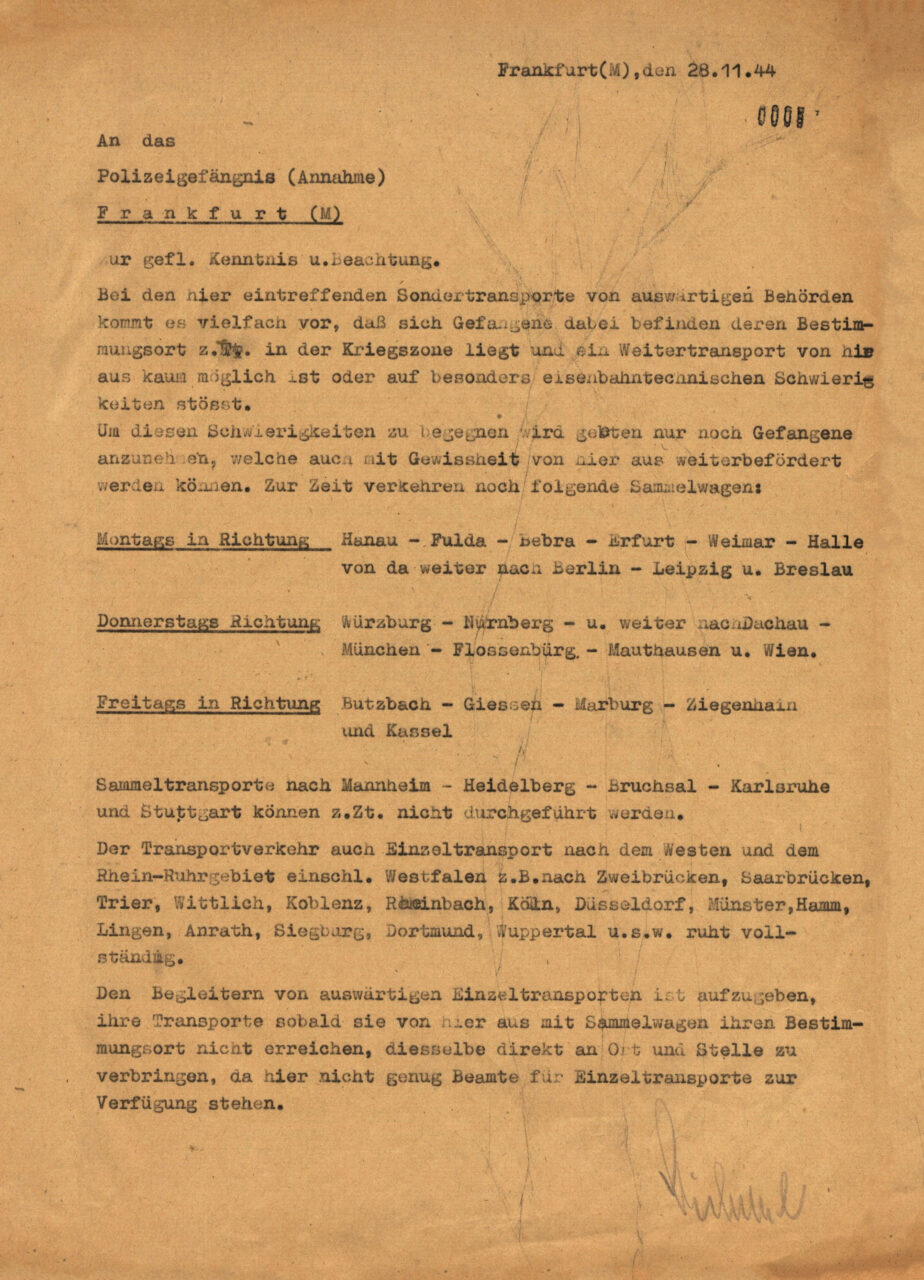People taken into protective custody by the Nazis were often sent in prisoner collective transports by train from platform 16 of Frankfurt‘s main railway station on a journey lasting several days, the so-called »Schubweg«. Prisoners were rounded up in the various prisons of the German Reich so that they could be transported away together in collective transports. The destination was usually unknown to the prisoners. In many cases it meant death.
The journey, which took place under catastrophic conditions, usually lasted several days, sometimes even weeks or months, and consisted of numerous prison stations, such as the Klapperfeld police prison.
Otto Oeser describes this journey as follows:
»I had already been in the Vechta men‘s prison for about five weeks when the chief inspector of the house had me brought before him. Something new again, I thought. (…) The next morning we started our journey, first to Bremen. There were about 15 to 20 prisoners in a large communal cell, all waiting for their onward transport. (…) The next stop was Hanover. From there we went on to Kassel. Here I had my first contact with a group of prisoners who had come from Buchenwald concentration camp and some of whom were to be transferred to their home Gestapo. (…) The journey continued south. For days I was on the road with the prisoner transport wagons of the Reichsbahn. From one freight station to the next. Only in the evening were we unloaded and taken to a prison along the route. Our next destination was Frankfurt. The passenger train with the transport wagon behind it stopped in the station hall. We were taken out of the cells of the wagon one by one and the steel shackles clicked on our wrists. But what was that? Two policemen were standing on the platform holding a long, heavy iron chain in their hands. They connected us to this chain on the left and right with our shackles. This created a long chain tapeworm, with about 20 legs on each side. This was a sensation for the railway passengers who rushed to see it. You had to have seen something like that! Serious criminals, as the good citizen imagined them. Pale faces with unshaven stubble beards, their heads shaved or covered with stringy, unkempt hair. Yes, such people were not allowed to walk around freely! Who of them knew that we had all been in the cells for years, that we had been on the road for days and had not had the opportunity to groom our hair and shave in the detention centres? So we marched out of the station building, for admission to the ‚Green Minna‘, which drove us to the Frankfurt police building. After the usual formalities, we were taken to the cell wing. There we were in for another surprise. On both sides of a narrow corridor were small individual cells. These cells did not have a solid wall facing the corridor, but a network of steel wire. Each cell inmate could thus observe the other person in all his activities. While the one on one side had to go to the potty, the other one on the opposite side could watch him at leisure while he did his vital work. The poor sinner‘s television. Further stops with the pushcart were Bruchsal, Stuttgart, Ulm and, as the last stage, Munich. From there it went to Dachau on 10 May 1939 in a police van.«

Source: Oertel, Otto; Appelius, Stefan (Hrsg.): Als Gefangener der SS (S.75)